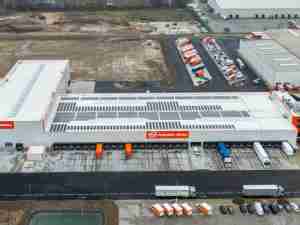Coface sees rising credit risk in chemical, pharmaceutical and automotive sectors
posted by AJOT | Sep 26 2013 at 11:59 AM | Logistics
Sector Risk Review
Credit risk has increased in three sectors:
• Chemicals: The risk level has risen from ‘medium’ to ‘high’ in Europe and Emerging Asia. In Europe, the profitability of chemical companies has fallen 19% in the last year, due to sluggish demand and competition from US exporters. In Emerging Asia, particularly in China, small and medium enterprises (SMEs) have become the first victims of the shrinking credit supply.
• Pharmaceuticals: The risk level is ‘high’ in Europe. Emerging Asia and North America have seen a relative stabilization with credit risk considered ‘moderate’ and ‘medium,’ respectively. In Europe, pharmacies, whose sales and margins are falling, and distributors have been adversely affected by measures to reduce the growth in health spending.
• Automotive: The 2009 crisis drastically changed the stakes for the global automotive industry. Europe is the most affected region with ‘very high’ risk. The European automotive industry has continued to decline since the crisis, faced with structurally high production costs and a lack of domestic outlets. The new wave of bankruptcies in the French automotive sector illustrates the European problem. Between August 2012 and July 2013, automotive bankruptcies increased 11% in France. Worse yet, the financial cost of these bankruptcies for suppliers was up 35% due to a greater number of larger companies going bankrupt, particularly among traders (58% of the total) and sub-contractors (24% of the total.) Considering that bankruptcies rose only 6% across all sectors in France, the automotive figures are especially worrisome.
Turkey & Russia Auto Markets:
Worth the risk?
European automakers are looking for growth in emerging markets, particularly Turkey, which is highly export-oriented and cost-competitive, and Russia, with a large and dynamic domestic market.
What are the risks?
Besides the volatility of growth, these countries suffer from several drawbacks. The Turkish automotive sector is in a fragile position due to heavy taxation and its dependence on the economic conditions of the European Union, the destination of 40% of the country's exports. Another difficulty is that R&D efforts are insufficient to meet the competition from Central and Eastern Europe. In Russia, international sub-contractors face ever-present protectionism, despite the recent accession of the country into the World Trade Organization.
What is the potential?
Despite these drawbacks, Turkey and Russia offer good opportunities. The fast-growing middle class remains an important driver as households are eager to catch up on car purchases. There are only 151 vehicles per 1,000 inhabitants in Turkey and 260 in Russia, compared to 613 in the countries of Western Europe. The attractiveness of these markets is reinforced by the strong support of governments, whose aim is to ensure a major paradigm shift.
"Differentiating by costs can no longer be an industrial policy over the long term. To continue to attract foreign investors, emerging countries, including Russia and Turkey, must now focus on innovation. As for European prospects, distributors, greatly weakened by the crisis, need to reinvent the whole model, with flexibility and customization as essential elements," explains Nicolas de Buttet, Director of Underwriting for the Western Europe Region at Coface.









